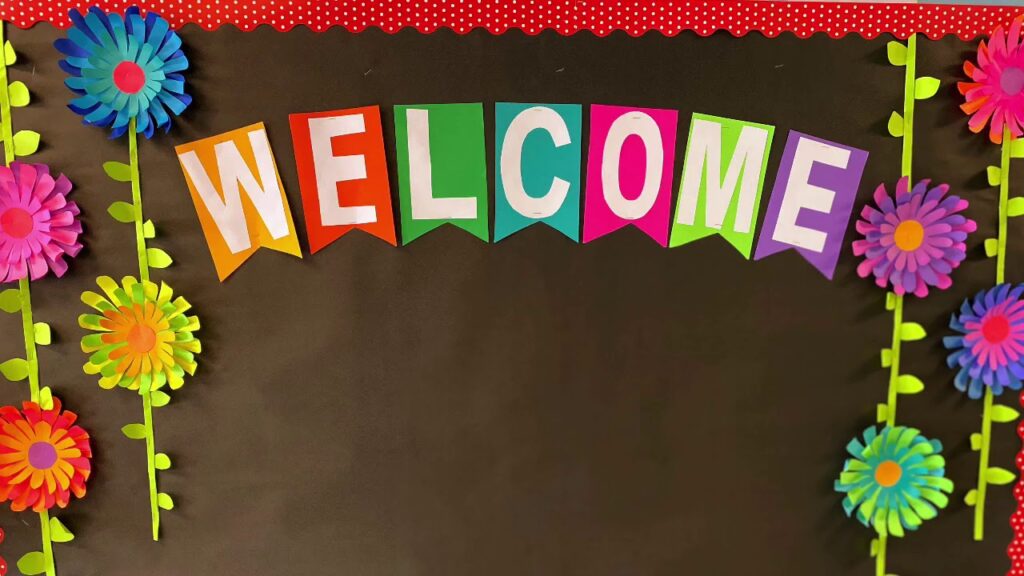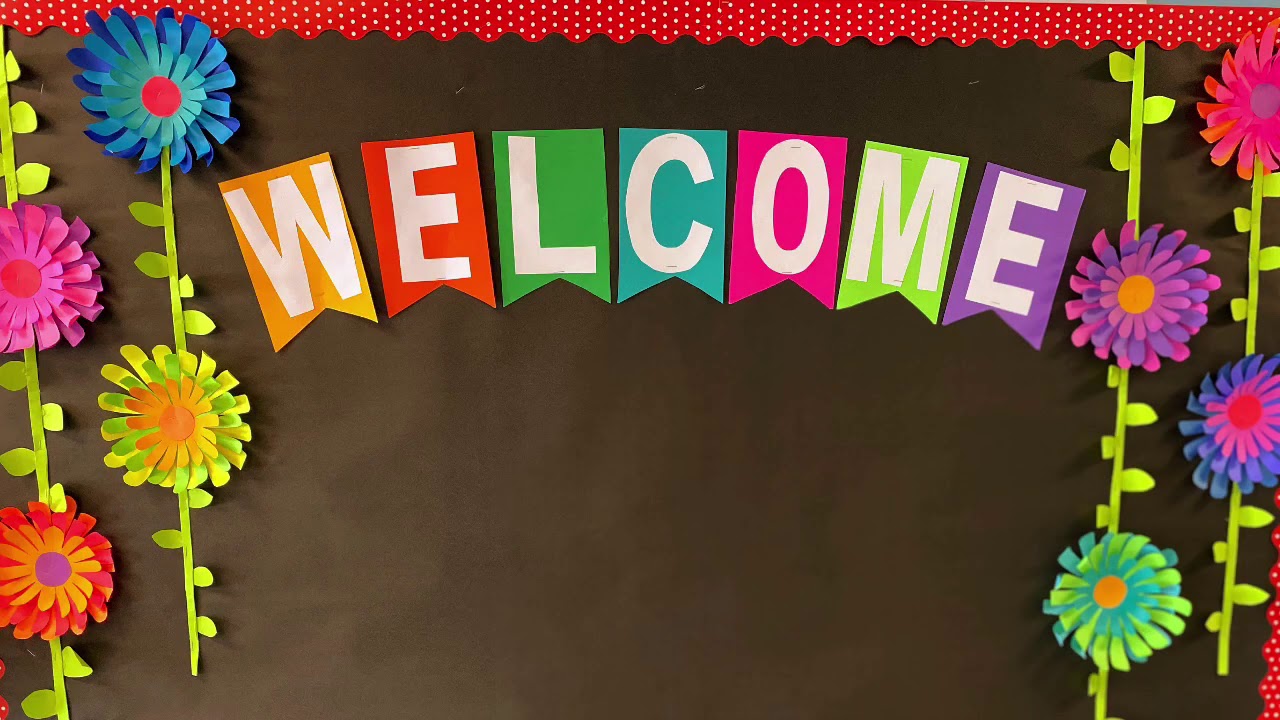
Welcome Preschoolers: A Comprehensive Guide for Parents and Educators
Welcoming preschoolers into a new environment, whether it’s a classroom, daycare, or even a structured home learning setup, is a significant milestone. It’s a time filled with excitement, anticipation, and perhaps a little anxiety for both the child and their caregivers. Understanding how to create a smooth and positive transition for these young learners is crucial for their overall development and future academic success. This comprehensive guide aims to provide parents and educators with the knowledge and strategies needed to effectively welcome preschoolers and foster a nurturing and stimulating learning environment.
Understanding the Preschooler Mindset
Before diving into practical tips, it’s important to understand the cognitive and emotional landscape of a preschooler. Typically, preschoolers are between the ages of 3 and 5. This developmental stage is marked by rapid growth in various areas:
- Cognitive Development: Preschoolers are developing their problem-solving skills, memory, and attention span. They are curious and eager to learn, but their understanding of abstract concepts is still limited.
- Social-Emotional Development: This is a crucial period for learning how to interact with others, share, take turns, and manage emotions. Preschoolers are developing their sense of self and learning to navigate social situations.
- Physical Development: Gross motor skills (running, jumping, climbing) and fine motor skills (drawing, cutting, buttoning) are being refined.
These developmental factors influence how a preschooler will react to a new environment. Some children may adapt quickly, while others may require more time and support. Recognizing individual differences is key to a successful transition. Many resources are available to help you welcome preschoolers into any environment, and understanding their developmental stage is the first step.
Creating a Welcoming Environment
The physical environment plays a significant role in how comfortable and secure a preschooler feels. Here are some key considerations:
Physical Space
- Safety First: Ensure the environment is safe and free from hazards. This includes securing furniture, covering electrical outlets, and storing potentially dangerous materials out of reach.
- Child-Sized Furniture: Provide furniture that is appropriately sized for preschoolers. This allows them to feel comfortable and independent.
- Designated Learning Centers: Create distinct areas for different activities, such as a reading corner, a block area, an art station, and a dramatic play area. These centers should be well-organized and inviting.
- Personal Touches: Incorporate personal touches that make the space feel welcoming and familiar. This could include displaying children’s artwork, photographs of their families, or items that represent their interests.
Emotional Atmosphere
The emotional atmosphere is just as important as the physical space. Create a warm, supportive, and inclusive environment where children feel valued and respected.
- Positive Interactions: Foster positive interactions between children and adults. Use encouraging language, offer praise, and provide opportunities for collaboration.
- Clear Expectations: Establish clear and consistent expectations for behavior. Explain the rules in a simple and age-appropriate manner.
- Emotional Support: Be sensitive to children’s emotional needs. Provide comfort and reassurance when they are feeling anxious or upset.
- Inclusive Practices: Create a culturally responsive environment that celebrates diversity and promotes inclusion.
Preparing Preschoolers for the Transition
Preparation is key to a smooth transition. Here are some strategies to help preschoolers prepare for a new environment:
Pre-Visit Opportunities
- Arrange Visits: If possible, arrange a visit to the classroom or daycare before the first day. This allows the child to become familiar with the space and meet the teachers.
- Virtual Tours: If an in-person visit is not possible, consider a virtual tour. Many schools and daycares offer online tours that allow children to explore the environment from home.
- Read Books: Read books about starting preschool or daycare. This can help normalize the experience and address any anxieties the child may have.
Social Stories
Social stories are short, personalized stories that describe a specific situation and provide guidance on how to respond. These stories can be particularly helpful for children who are anxious about starting preschool. For instance, a social story could detail a typical day at preschool, highlighting the fun activities and friendly faces. Use social stories to help welcome preschoolers and ease their anxieties.
Role-Playing
Engage in role-playing activities to help the child practice common preschool scenarios, such as saying goodbye to their parents, asking for help, or sharing toys. This can help build their confidence and reduce anxiety.
Open Communication
Talk to the child about their feelings and concerns. Acknowledge their anxieties and reassure them that it’s normal to feel nervous. Answer their questions honestly and provide age-appropriate explanations.
Strategies for the First Few Days
The first few days are crucial for setting the tone for a positive experience. Here are some strategies to help ease the transition:
Gradual Introduction
Consider a gradual introduction to the new environment. Start with shorter visits and gradually increase the length of time the child spends there. This allows them to adjust at their own pace.
Comfort Items
Allow the child to bring a comfort item from home, such as a favorite stuffed animal or blanket. This can provide a sense of security and familiarity.
Consistent Routine
Establish a consistent drop-off routine. This helps the child know what to expect and reduces anxiety. Say a quick and loving goodbye, and reassure them that you will be back to pick them up.
Communication with Caregivers
Maintain open communication with the child’s teachers or caregivers. Share any relevant information about the child’s personality, interests, and needs. Ask for regular updates on their progress and well-being.
Addressing Common Challenges
Even with careful preparation, some preschoolers may experience challenges during the transition. Here are some common challenges and strategies for addressing them:
Separation Anxiety
Separation anxiety is a common concern for preschoolers. To address this:
- Validate Feelings: Acknowledge the child’s feelings and reassure them that it’s okay to feel sad or anxious.
- Stay Positive: Maintain a positive and upbeat attitude. This can help the child feel more confident.
- Avoid Lingering: Avoid lingering at drop-off. This can prolong the child’s anxiety.
- Comfort Objects: Allow the child to keep a small photo of their family in their pocket.
Resistance to Activities
If a child is resistant to participating in activities:
- Offer Choices: Provide choices whenever possible. This gives the child a sense of control.
- Encourage Participation: Encourage the child to participate, but don’t force them.
- Observe Interests: Observe the child’s interests and incorporate them into activities.
Aggressive Behavior
If a child exhibits aggressive behavior:
- Identify Triggers: Identify the triggers for the behavior.
- Teach Alternatives: Teach alternative ways to express emotions.
- Model Appropriate Behavior: Model appropriate behavior.
- Consistent Consequences: Implement consistent consequences for aggressive behavior.
The Role of Parents and Educators
Both parents and educators play a crucial role in helping preschoolers adjust to a new environment. Here are some key roles and responsibilities:
Parents
- Preparation: Prepare the child for the transition by talking about it, arranging visits, and reading books.
- Communication: Maintain open communication with the child’s teachers or caregivers.
- Support: Provide emotional support and reassurance.
- Consistency: Maintain consistency between home and school routines.
Educators
- Welcoming Environment: Create a warm, supportive, and inclusive environment.
- Individualized Attention: Provide individualized attention to each child.
- Observation: Observe children’s behavior and identify any potential challenges.
- Collaboration: Collaborate with parents to address any concerns.
Long-Term Benefits of a Positive Preschool Experience
A positive preschool experience can have long-term benefits for a child’s development and future academic success. These benefits include:
- Social-Emotional Skills: Enhanced social-emotional skills, such as empathy, cooperation, and self-regulation.
- Cognitive Development: Accelerated cognitive development, including improved problem-solving skills, memory, and attention span.
- Academic Readiness: Increased academic readiness, including improved literacy and numeracy skills.
- Self-Confidence: Increased self-confidence and a positive attitude towards learning.
By understanding the unique needs of preschoolers and implementing effective strategies, parents and educators can create a welcoming and supportive environment that fosters their growth and development. Taking the time to properly welcome preschoolers sets the foundation for a lifetime of learning and success. Remember to be patient, understanding, and responsive to each child’s individual needs. A positive start to preschool can make a world of difference.
Resources for Parents and Educators
Numerous resources are available to support parents and educators in welcoming preschoolers. These include:
- Books and Articles: Books and articles on child development, preschool education, and parenting.
- Websites: Websites offering tips, advice, and resources for parents and educators.
- Workshops and Training: Workshops and training sessions on early childhood education.
- Parent Support Groups: Parent support groups where parents can share experiences and learn from each other.
Welcome preschoolers with open arms and a well-prepared environment, and you’ll be setting them up for a successful and fulfilling educational journey. Make sure to utilize available resources and stay informed about best practices in early childhood education to continually improve the learning experience for these young minds. The effort you put in now will pay dividends in their future development and success.
[See also: Creating a Positive Learning Environment for Preschoolers]
[See also: Overcoming Separation Anxiety in Young Children]
[See also: The Importance of Play-Based Learning in Early Childhood]

